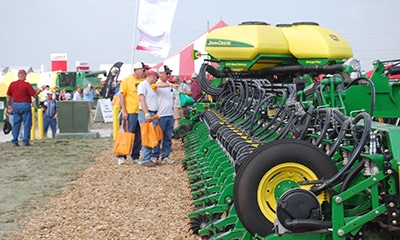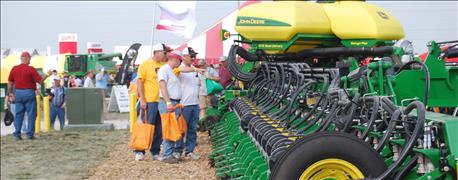August 28, 2016

Editor’s Note: Brent Willett is executive director of Iowa’s Cultivation Corridor.
With corn prices today below $3 a bushel, we know that achieving high yields in Iowa to shore up farm incomes is a critical component of a diversified approach to long-term expansion in our nation’s changing agricultural economy. Of course, the market price of any major crop is beyond the control of any individual farmer; farmers are price takers, not price makers.

OPPORTUNITY KNOCKS: Cultivation Corridor is a group of Iowa farm and ag business groups working with institutions of higher learning to accelerate the growth in bioscience and attract the state’s talent and technology to support the advancements needed to feed the world.
Economists call this “systemic risk,” which in the case of American farmers means producers are stuck with what is offered by the market. Other traditional risks, including weather, disease and input cost fluctuation are today met with new challenges related to the American farmer’s access to a diminishing inventory of arable production land. We know 1.2 acres of farm ground is required to feed every American. We also know that today, about 1.8 acres per person is in use or available, but that figure is projected to shrink to less than 0.7 acres per person by 2050.
Our growing world population faces extraordinary challenges
Indeed, what Mark Twain said about land remains true: “They ain’t making it anymore.” What will make up the difference? Innovation—from America’s farmers and companies which supply the ag industry.
One key is making sure farmers can get the most out of each and every quarter section of farmland. It is in this intersection of science, technology and nature where organizations like the Cultivation Corridor in central Iowa are working to spur growth and ensure new innovations in agriculture happen here at home and reach producers faster than ever. A burgeoning global population which will reach 9.5 billion people by the year 2050 demands it.
More innovation needed to increase global food production
Last year, a Food and Agriculture Organization of the United Nations report found that 795 million people around the world today are undernourished. We know that the nutrition demands of the coming half century will require us all to produce more food in the next 50 years than we have in the last 10,000 combined. It’s a clarion call to action for not only farmers, but also one for the companies and researchers which create new technologies and processes to protect our food from pests and spoilage, and government regulatory bodies.
Hunger is not new, nor is innovation in farming. Several years ago, Bill Gates challenged the world’s major crop science companies to aggressively innovate and create new products to increase yields and squarely address world hunger. He argued that the industry needed “to develop crops that can grow in a drought; that can survive in a flood; that can resist pests and disease... on the same land in harsher weather.”
Scientists at USDA, universities, research institutions and private sector companies have delivered incredible results in recent decades and remain at work on crucial crop science innovations and systems which promise to produce ever increasing yields. In the face of unprecedented nutrition needs around the world, this has taken on exceptional urgency. Take, for example, pest control technology. According to the Journal of Agricultural Science, pests alone are responsible for between 25% and 50% of crop losses. The ongoing improvement of pest control technologies—something few people think about—is incredibly important to the world’s ability to feed itself.
More investment needed in ag research and development
The costs of research are skyrocketing. Major ag companies today spend billions annually on research and development. The cost of regulation has become an unwelcome drag on research efforts and the delays caused by federal agencies slow down progress. Today it takes on average 11 years and $256 million from development to EPA approval of a new crop protection product, an increase of 39% in just the last five years, according to a recent study. And the pace of approvals at the EPA has slowed, from an average of four per year in 1995 to 1.3 per year today.
These rising barriers to entry threaten the next generation of crop protection tools for farmers. Companies are realizing they may need to grow bigger in order to meet these challenges. Just as farmers may address systemic risks through land acquisition or joining a co-op, agricultural companies may turn to mergers and acquisitions to address the inherent risks of product development and the costs of an unpredictable or slow regulatory process.
We must work together to feed an increasing global population
There is little doubt that times are tough on America’s farmers. But in Iowa and across America, farmers have demanded and embraced new and innovative solutions to reduce risks and ensure each acre is as productive as it can be. Sometimes these solutions come from the farmer in the field, sometimes from the scientist in the lab, but most often it is from a convergence of the two. As a result, America’s farmers are the best in the world at what they do.
To ensure we continue to be the world leader in agriculture, we must continue to allow smart business women and men to work together to make smart business decisions… whether in the barn or the boardroom.
Willett is executive director of Iowa’s Cultivation Corridor, a public-private economic development organization working to advance Iowa agriculture. Find out more at CultivationCorridor.org.
You May Also Like




